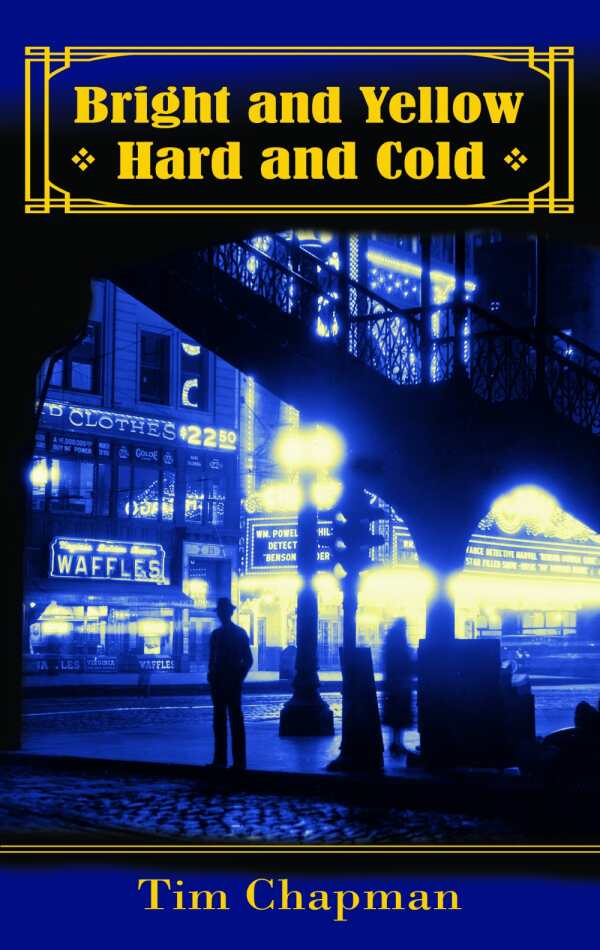Bright and Yellow, Hard and Cold
A satisfying whodunit goes beyond the genre’s cliches by creating believable characters.
There doesn’t seem much to be done with the crime narrative anymore. From the sarcastic gumshoes to the psycho killers and mafia brotherhoods of years gone by, readers seem to know what to expect when they pick up a paperback dealing with cops, crooks, and mystery solving. Yet Chicagoan Tim Chapman has dared to take his own stab at the crime novel with Bright and Yellow, Hard and Cold, combining historical fiction with an investigative whodunit, and yielding surprisingly satisfying results.
Coroner Sean McKinney is a widower struggling to maintain self-respect while doing his job testifying for overzealous lawyers with his lab findings. His investigations lead him to a trail of corpses left by the crazed Gilbert Anglin, a thug out searching for seniors associated with the 1930s Karpis-Barker gang that left a hidden treasure of heisted gold. Anglin’s relentless search for riches crosses head-on with McKinney’s own search to help get a boy accused of the crime released, all leading to an explosive climax.
Chapman’s key talent seems to be structure. Bright and Yellow, Hard and Cold shows obvious care in juggling three, almost four, narratives simultaneously—the historical accounts of the famed gold heist from the point of view of the hapless depression bumpkin Delroy, Anglin’s search for the gold, McKinney’s search for Anglin, and McKinney’s personal struggles with single parenting, love, and career. It’s an interesting combination of character and action. Anglin’s murderous quest keeps the narrative driving while McKinney’s relentless search for Anglin infuses the text with believable characters with human emotion not typical in crime novels. There’s a real heart behind the building mayhem.
The faults of Bright and Yellow, Hard and Cold exist in and among the structure of the novel itself. The dialogue between McKinney and his colleagues, as well as his daughter Angelina, is often too sentimental to be credible while Anglin’s crude brutality occasionally renders him a two-dimensional bad guy. The obvious hip references to Chicago—blues, fast food, etc.—plus the historical subplot reduce the novel’s narrative strength, too.
Overall though, Bright and Yellow, Hard and Cold has a unique crime story to tell, keeps it gripping, and makes one wonder what Mr. Chapman has up his sleeve for the next novel.
Reviewed by
James Burt
Disclosure: This article is not an endorsement, but a review. The publisher of this book provided free copies of the book and paid a small fee to have their book reviewed by a professional reviewer. Foreword Reviews and Clarion Reviews make no guarantee that the publisher will receive a positive review. Foreword Magazine, Inc. is disclosing this in accordance with the Federal Trade Commission’s 16 CFR, Part 255.

